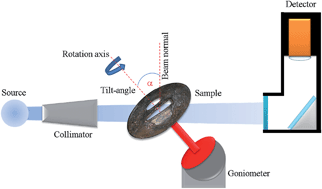Neutron computed laminography on ancient metal artefacts
Abstract
Computed laminography (CL) has been developed as a method to complement computed tomography for three-dimensional imaging of laterally extended specimens. Originally applied for medical purposes, more recently CL has been used as a non-destructive method, not only in the materials science research, but also with rising interest in artwork investigations. Here, we report the implementation of computed laminography with polychromatic and monochromatic neutron radiation carried out on five historical and archaeological metal artefacts pertaining to different periods and technological contexts. The measurements were performed at the CONRAD II neutron imaging facility at the BERII research reactor of Helmholtz-Zentrum Berlin (HZB).


 Please wait while we load your content...
Please wait while we load your content...